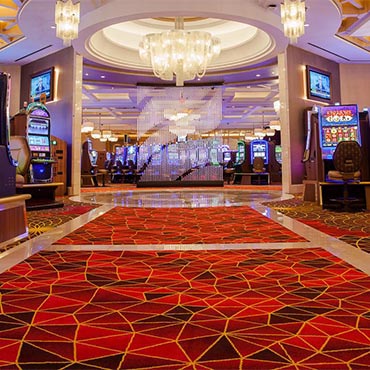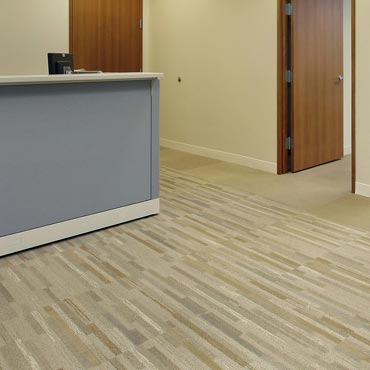Hagaman broadloom carpet collections offer distinctive designer styling, and luxurious constructions at remarkably affordable price points. We achieve this innovative combination of fashion and value by our quality craftsmanship. Hagaman offers fine style and craftsmanship in woolen carpet, at a price you can afford. Learn More
Custom Carpet
Custom Carpet Guide

The Significance of Commercial Custom Carpet in Modern Interior Design and Architecture
In the realm of modern interior design and architecture, the role of commercial custom carpeting is paramount. This critical design element, often overlooked, plays a vital role in defining the aesthetic, acoustic, and tactile character of commercial spaces. As architects, interior designers, specifiers, and commercial buyers increasingly seek to create unique, functional, and sustainable environments, the importance of custom carpeting cannot be understated.
Types and Versatility of Custom Carpet
Custom carpets come in a myriad of types, each offering unique benefits. From plush cut piles ideal for luxurious settings, to durable loop piles for high-traffic areas, the variety is extensive. The versatility of custom carpets lies in their ability to be tailored in terms of color, pattern, texture, and size, allowing for a perfect match with the overall design scheme of a space.
Durability and Sustainability
Durability is a key consideration in commercial spaces. Custom carpets made from nylon or polypropylene are known for their resilience, maintaining their appearance under heavy foot traffic, and resisting stains and fading. Recently, there has been a significant shift towards sustainability in carpet manufacturing. Eco-friendly materials such as recycled nylon, PET fibers, and natural fibers like wool, are becoming popular. These sustainable options not only contribute to a healthier environment but also appeal to the growing market of eco-conscious consumers.
Enhancing Commercial Spaces
The impact of custom carpeting on commercial spaces is multifaceted. Aesthetically, it adds warmth and texture, creating an inviting atmosphere. Acoustically, it absorbs sound, contributing to a more comfortable and productive environment. From a practical standpoint, it provides safety by reducing slip hazards and comfort underfoot.
Selecting the Ideal Custom Carpeting
For professionals selecting custom carpeting for commercial projects, considering the specific needs of the space is crucial. High-traffic areas require durable, easy-to-maintain carpets, while executive spaces might call for more luxurious options. It is essential to balance aesthetic desires with functional requirements.
- Consider Foot Traffic: Evaluate the expected foot traffic in the area to determine the durability needed.
- Design and Aesthetics: Choose colors and patterns that complement the overall design theme. Customization allows for unique branding opportunities or thematic designs that can reinforce a company's identity or the architectural narrative.
- Material Matters: Depending on the project's sustainability goals and budget, select from natural, synthetic, or recycled materials. Each has its own set of advantages in terms of durability, feel, and environmental impact.
- Maintenance and Longevity: Opt for materials and weaves that are easy to clean and maintain, especially in high-traffic or spill-prone areas.
- Safety and Comfort: Consider carpets with anti-slip properties and adequate cushioning for comfort and safety.
Recent Trends and Innovative Materials
The custom carpet industry is witnessing exciting trends. Digital printing technology has revolutionized carpet design, allowing for intricate patterns and a limitless array of colors. This technology enables designers to create truly bespoke pieces that can become focal points in a space.
Innovative materials are also shaping the future of custom carpets. For instance, bio-based materials and advanced synthetic fibers offer improved durability and stain resistance. The use of smart textiles in carpets, equipped with integrated technology like LED lighting or interactive elements, is an emerging trend that opens new possibilities in design.
Conclusion
Commercial custom carpeting is not just a flooring choice; it's a design statement that contributes significantly to the functionality and aesthetic of a commercial space. It offers a unique opportunity for architects, interior designers, and specifiers to manifest their creative visions while addressing practical considerations like durability, sustainability, and user comfort. With the advent of new technologies and materials, the possibilities in custom carpeting are ever-expanding, promising exciting developments in the world of modern interior design and architecture.
Disclaimer: The information provided in this article is for general informational purposes only. While we strive to ensure the accuracy and reliability of the information presented, we make no warranties, express or implied, about the completeness, accuracy, reliability, suitability, or availability with respect to the content. Any reliance you place on such information is strictly at your own risk. We recommend consulting with professionals for specific advice tailored to your project’s needs, particularly regarding building codes, regulations, and product specifications.
Under no circumstances shall we be liable for any loss or damage, including without limitation, indirect or consequential loss or damage, arising from the use of, or reliance on, the information provided in this article.
Featured Brands
The Best 3 Custom Carpet Brands

Hagaman Carpet
Profile | WebsiteHagaman broadloom carpet collections offer distinctive designer styling, and luxurious constructions at remarkably affordable price points. We achieve this innovative combination of fashion and value by our quality craftsmanship. Hagaman offers fine style and craftsmanship in woolen carpet, at a price you can afford. Learn More

Brintons Axminster Carpets
Profile | WebsiteBrintons has been at the forefront of the global woven carpet industry for more than 230 years. From palaces to hotels, restaurants to public buildings, convention centres, airports and cruise ships, Brintons carpets have a long history of contributing to the worlds's most stunning & beautiful interiors. Learn More

Shelmarc Carpets
Profile | WebsiteIf you need your own customized product, Shelmarc offers custom services to meet your specific needs. We are able to custom make almost any type of carpet that you can envision. Learn More
Custom Carpet News
Latest Custom Carpet News
Custom Carpet...Navigating the World of Commercial Custom Carpets: A Guide for Architects, Interior Designers, and Floor Covering Buyers In the dynamic sphere of commercial interior design, the selection of floor covering plays a pivotal role in defining the aesthetic and functional character of a space. Among various options, commercial custom carpets stand out for their versatility, design p... |


